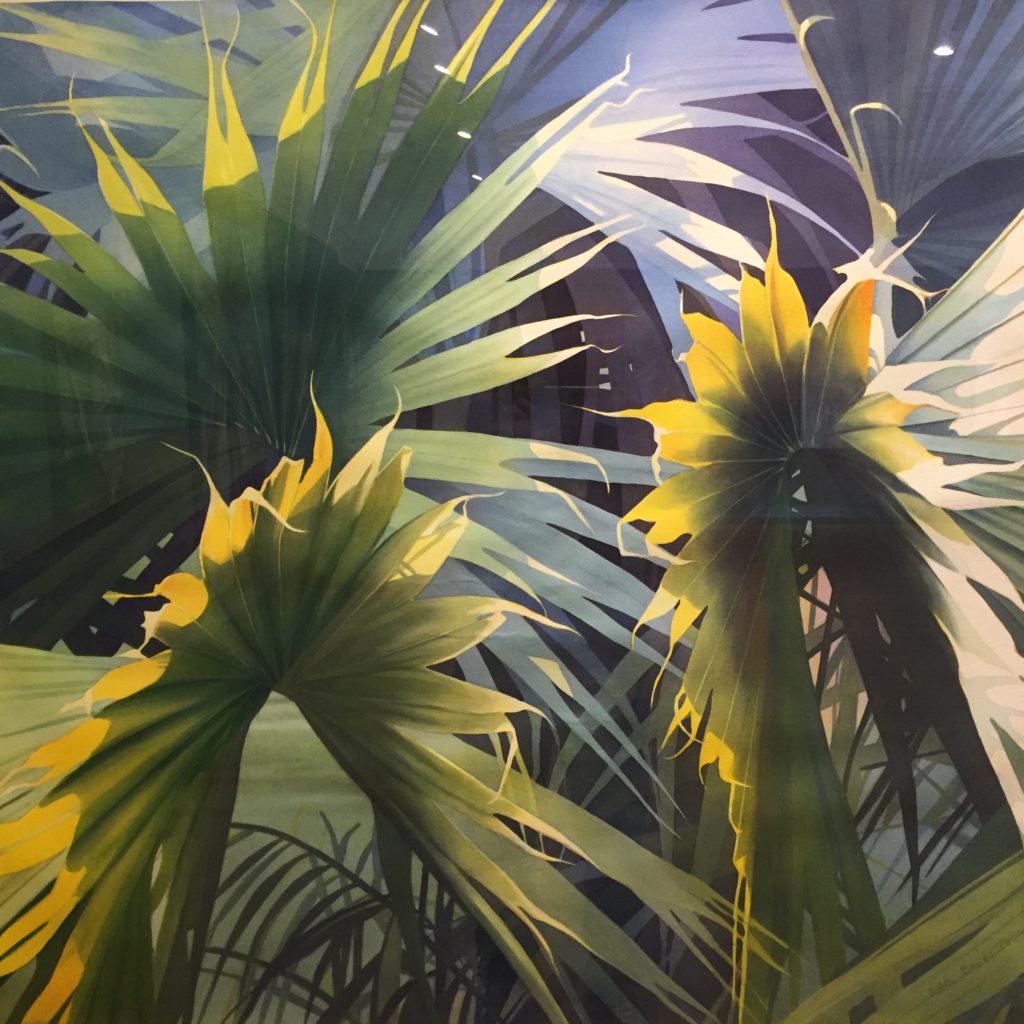Serenity and joy at Butler

Palm Pattern #125, Edith Bergstrom, at Butler Institute of American Art
The Butler Institute of American Art, the nation’s first museum devoted exclusively to American art, is a jewel tucked way in an old, slimmed-down Rust Belt town, which was booming when America’s industrial age was in full swing. Youngstown is probably one of the communities hardest hit by the migration of heavy industry out of the U.S. and has had to rebuild since huge job losses in the 1970s. Once a city of 170,000 people, it shrank to around a third of that in the 70s and 80s. As with most cities once nourished by the Erie Canal (like the one in which I live), it has had to find ways to diversify its economy and attract and grow innovative new technology firms despite the Great Lakes climate. In the past decade, Youngstown began to stir with new economic life and because of its history as an industrial powerhouse, back when it attracted immigrant workers from around the world, it remains one of the most racially and culturally diverse cities in the nation. Flint and Detroit may get all the publicity, but Youngstown has to have been buffeted and betrayed by the global economy about as severely as any town in the world—and yet it has found a path forward to a new sort of identity and pride in itself. The Butler seems to assert a kind of unassailable character, an affirmation that a few quiet human virtues—gratitude, appreciation, taste—won’t just survive but can prevail in our current feverish media culture. It feels a little miraculous to walk into this little oasis of beauty and wisdom hidden in “flyover country,” among the ghosts of steel mills almost exactly halfway between New York City and Chicago, in the foothills of the Appalachian Mountains.
I delivered a painting to the Butler this past week for the Midyear exhibition by driving west through Buffalo and Erie. I was startled, when I turned onto Wick Avenue, where the museum is situated on the Youngstown State University campus. It’s a beautiful structure, a little grander in person than in its photographs, with a columned façade that looks as if it were modeled after one of Piero’s early Renaissance piazzas. After I dropped off my still life in its wooden crate, I decided to linger for a look at my destination. It was such a pleasure, I ended up staying far longer than I’d intended. It was like being introduced to someone with whom you feel a deep affinity—both the permanent collection and the current temporary exhibits were evidence of a guiding, deeply affectionate intelligence about great art. That sense of welcoming affinity is how I feel every time I visit the Phillips Collection, and to a slightly lesser degree, smaller museums like the Morgan and the Frick—as if I’m perfectly at home in the space and with the work itself. Many of the museums in cities that once thrived because of the Erie Canal offer art museums whose character is akin to the Butler’s—The Albright-Knox, the Memorial Art Gallery, The Everson and Munson-Williams Proctor. The emphasis on American Art at Butler makes it somehow feel the most companionable of them all. By contrast, this hospitable sense of belonging is what I don’t feel when I tour many galleries and some museums. The Tate Modern in London, for example, had an atmosphere of severity, an almost impersonal sense that the art on display was meant to be a rude awakening, which is fine. That’s certainly a recurrent quality in modernist and post-modern work, and there’s nothing wrong with the occasional swift kick to the head, but here, everything I saw seemed to be imbued with a sense that art can celebrate life as a welcome gift. It was moving to feel this kind of serenity in a community that has endured enormous tribulations as America’s economy reconfigures itself.
It was a pleasure that a few of the paintings I was seeing for the first time had been familiar to me from reproductions for decades–while others were unfamiliar works by some of my favorite artists. It was a delight to finally see, in person, Edward Hopper’s Pennsylvania Coal Town, James Valerio’s Ruth and Cecil Him, and Music by John Koch along the mezzanine in the museum’s central gallery. Each is an example of the painter’s mastery at its peak. They were on display along with equally powerful work by Janet Fish, Neil Welliver, Alfred Leslie, Will Barnett, Jules Olitski, Paul Jenkins, Motherwell, Avery, Gorky, Ivan Albright and Pollock. Much of the work is exceptionally good, sometimes MORE